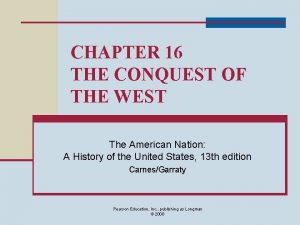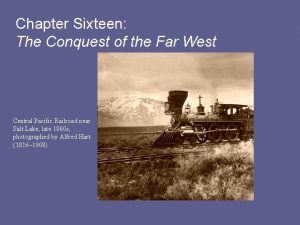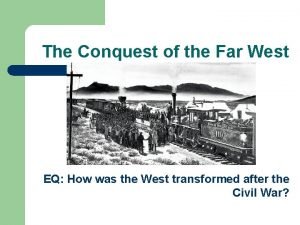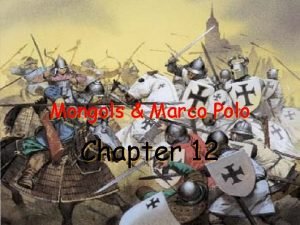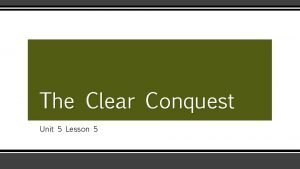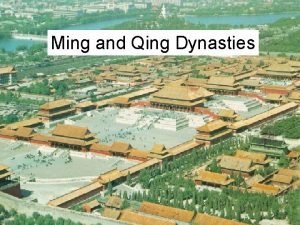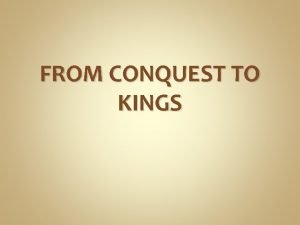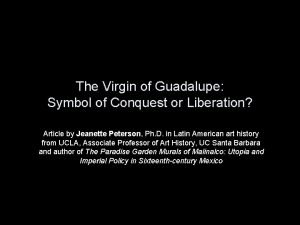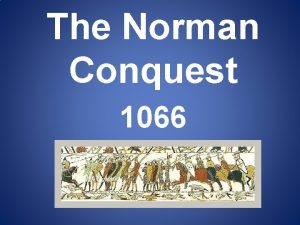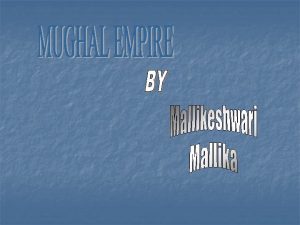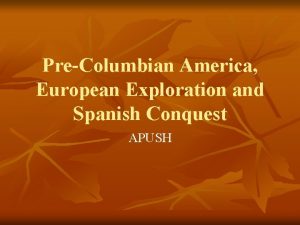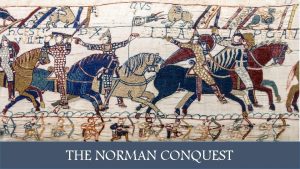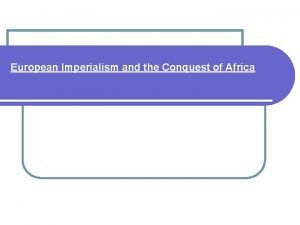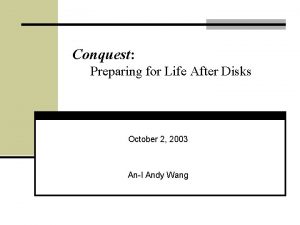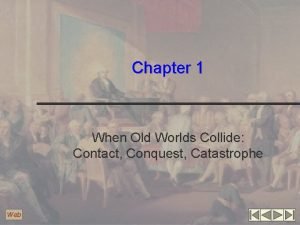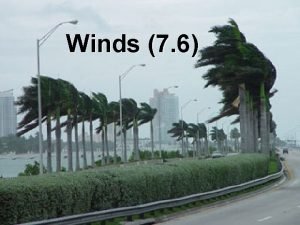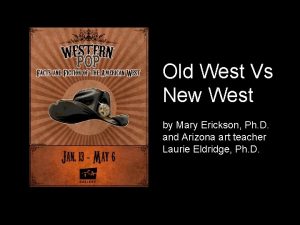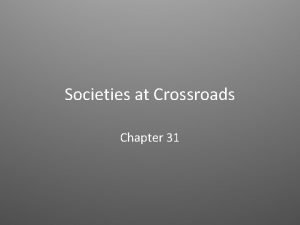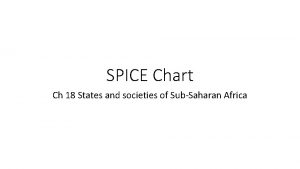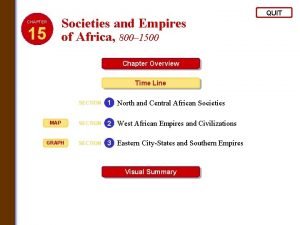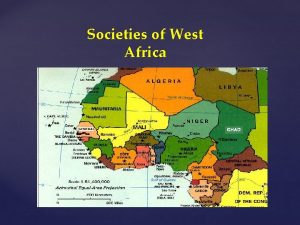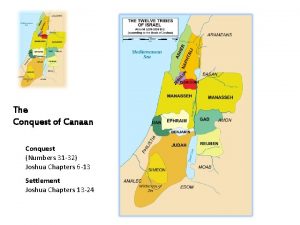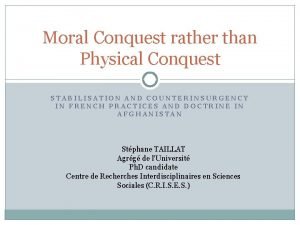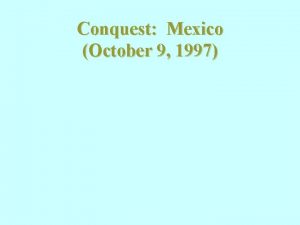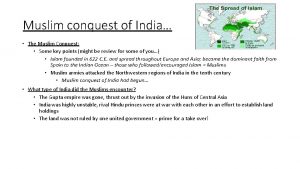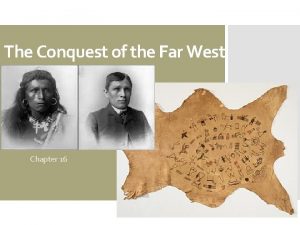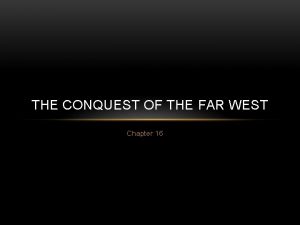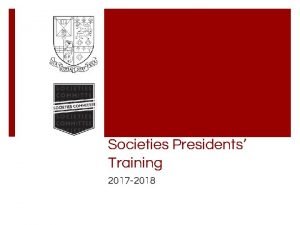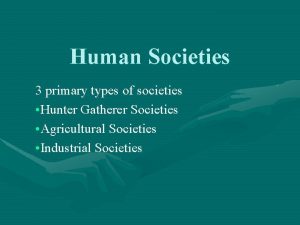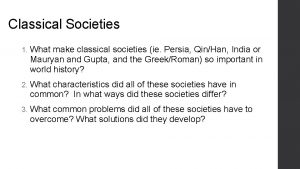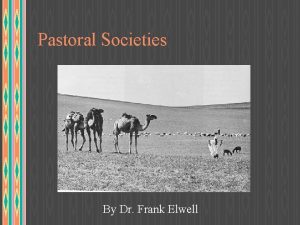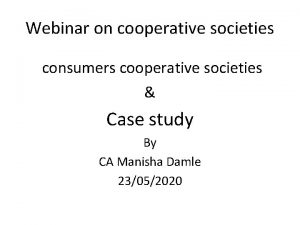CONQUEST OF THE WEST Chapter 16 Societies of





















































- Slides: 53

CONQUEST OF THE WEST Chapter 16

Societies of the Far West

Native Americans

Eastern Tribes *Some Eastern tribes had relocated west of Mississippi River: Cherokee and Creek

Western Tribes • Indians of the Pacific Coast: Chumash, Chinook • Indians of the Southwest: Navajo, Comanche, Apache

Plains Indian *various tribes divided into bands *some sedentary, most nomadic hunters *movement often based on migration of buffalo *finest light cavalry in the world

Weakness *Never able to unite against white aggression. Groups too independent *Conflicts between tribes distract from fighting whites one group may help whites against another group

Hispanic Communities *located in former possessions of Spain/Mexico: New Mexico, Texas, California *As more whites come Hispanics lose land power

Chinese Migration *Begins after 1848 *by 1880 200, 000 move to US – mostly California

Some resent Chinese Immigrants *resent success of Chinese *seen as rivals in economy

Transcontinental Railroad *over 12, 000 work on RR *90% of Central Pacific labor *worked long hours for low pay

After Railroad finished: *some hire as laborers *some work the land *many go to cities

By 1900 50% of Chinese population lives in cities of California “Chinatowns”

Nativism Returns *Chinese undercutting whites in wages and hours *Local laws appear *Physical Attacks

Chinese Exclusion Act *1882 *Bans immigration for 10 years *Bars Chinese in country from becoming naturalized citizens

• Act renewed in 1892 • Made permanent in 1902

Changing Western Economy

Labor in the West *Occasional labor shortage *work force stratified along racial lines

Mining st *1 economic boom of West * Gold and/or silver strikes: Colorado 59 Nevada 59 Black Hills 74

Ranching

Cattle Drive How to get cattle in Texas to markets in the East?

From 1867 to 1871 1. 5 million head of cattle are brought to Abilene along the Chisholm Trail

Frederic Remington Myth of the Cowboy

“America as a wide-open land of unlimited opportunity for the strong, ambitious, self-reliant individual to thrust his way to the top” Richard Slotkin The Fatal Environment: the myth of the frontier, 1800 -1890

Dash for Timber



Farming

Joseph Glidden - 1874

Closing the West

Frederick Jackson Turner The Frontier Thesis

End of. The the American End of the. Indian American Indians

Concentration Policy *Desire of whites to get Indian land *Each tribe assigned a reservation *Divided tribes-easy to control

Administration of Indian Reservations *officials often corrupt or ineffective *well-meaning officials didn’t understand tribal ways

Indian Wars

Sand Creek Massacre *Arapaho & Cheyenne under Black Kettle *Flag of truce *133 killed most women & children


George Armstrong Custer


Battle of the Little Big Horn Custer’s Last Stand June 25, 1876


Nez Perce *Chief Joseph *200 warriors+350 w&c *attempt to go to Canada *cover 1321 miles


Chief Joseph

Final resistance in Southwest *Geronimo fights from Mexico *Surrenders in 1886 with 30 others *Pursued by 10, 000

*Ghost Dancers-vision of Whites leaving *Wounded Knee-Sioux *40 soldiers 200 Sioux killed *1890 last ‘battle’

Dawes Act 1887 *Gradual elimination of tribal ownership of land *Give land to individuals *Don’t have full ownership for 25 years *Those who take land get citizenship *Send kids to school

Carlisle Indian Industrial School

Class of 09

Richard Henry Pratt Kill the Indian, save the man

Jim Thorpe

Commercial Farming *specialize in crops to be sold on National or World markets *cotton – 70% exported *Wheat 30 -40%

Farmer’s Grievances *Inequitable Freight rates *High interest rates *Inadequate Currency *Price fixing
 Chapter 16 the conquest of the far west
Chapter 16 the conquest of the far west The conquest of the far west
The conquest of the far west The conquest of the far west
The conquest of the far west Family and government of west africa in 1492
Family and government of west africa in 1492 Conquest chapter 12
Conquest chapter 12 The clear conquest
The clear conquest Qing conquest of the ming
Qing conquest of the ming Qing conquest of the ming
Qing conquest of the ming Joshua describes the conquest of canaan
Joshua describes the conquest of canaan Cycle of conquest and colonization
Cycle of conquest and colonization Musique conquest of paradise
Musique conquest of paradise Symbol of conquest
Symbol of conquest Norman conquest quiz
Norman conquest quiz Jahangir conquest
Jahangir conquest Xoserve conquest
Xoserve conquest Spanish exploration and conquest apush
Spanish exploration and conquest apush Norman conquest
Norman conquest Conquest
Conquest Conquest data disks
Conquest data disks Worlds apart conquest
Worlds apart conquest Horizontal movement of air
Horizontal movement of air West north west wind direction
West north west wind direction Wereldkaart met windrichtingen
Wereldkaart met windrichtingen East is east and west is west
East is east and west is west Old west vs new west
Old west vs new west Chapter 31 societies at crossroads
Chapter 31 societies at crossroads Mali spice chart
Mali spice chart Chapter 15 societies and empires of africa
Chapter 15 societies and empires of africa Hình ảnh bộ gõ cơ thể búng tay
Hình ảnh bộ gõ cơ thể búng tay Bổ thể
Bổ thể Tỉ lệ cơ thể trẻ em
Tỉ lệ cơ thể trẻ em Gấu đi như thế nào
Gấu đi như thế nào Chụp phim tư thế worms-breton
Chụp phim tư thế worms-breton Hát lên người ơi alleluia
Hát lên người ơi alleluia Các môn thể thao bắt đầu bằng tiếng bóng
Các môn thể thao bắt đầu bằng tiếng bóng Thế nào là hệ số cao nhất
Thế nào là hệ số cao nhất Các châu lục và đại dương trên thế giới
Các châu lục và đại dương trên thế giới Công thức tiính động năng
Công thức tiính động năng Trời xanh đây là của chúng ta thể thơ
Trời xanh đây là của chúng ta thể thơ Mật thư tọa độ 5x5
Mật thư tọa độ 5x5 Làm thế nào để 102-1=99
Làm thế nào để 102-1=99 độ dài liên kết
độ dài liên kết Các châu lục và đại dương trên thế giới
Các châu lục và đại dương trên thế giới Thơ thất ngôn tứ tuyệt đường luật
Thơ thất ngôn tứ tuyệt đường luật Quá trình desamine hóa có thể tạo ra
Quá trình desamine hóa có thể tạo ra Một số thể thơ truyền thống
Một số thể thơ truyền thống Cái miệng nó xinh thế chỉ nói điều hay thôi
Cái miệng nó xinh thế chỉ nói điều hay thôi Vẽ hình chiếu vuông góc của vật thể sau
Vẽ hình chiếu vuông góc của vật thể sau Thế nào là sự mỏi cơ
Thế nào là sự mỏi cơ đặc điểm cơ thể của người tối cổ
đặc điểm cơ thể của người tối cổ V cc
V cc Vẽ hình chiếu đứng bằng cạnh của vật thể
Vẽ hình chiếu đứng bằng cạnh của vật thể Vẽ hình chiếu vuông góc của vật thể sau
Vẽ hình chiếu vuông góc của vật thể sau
